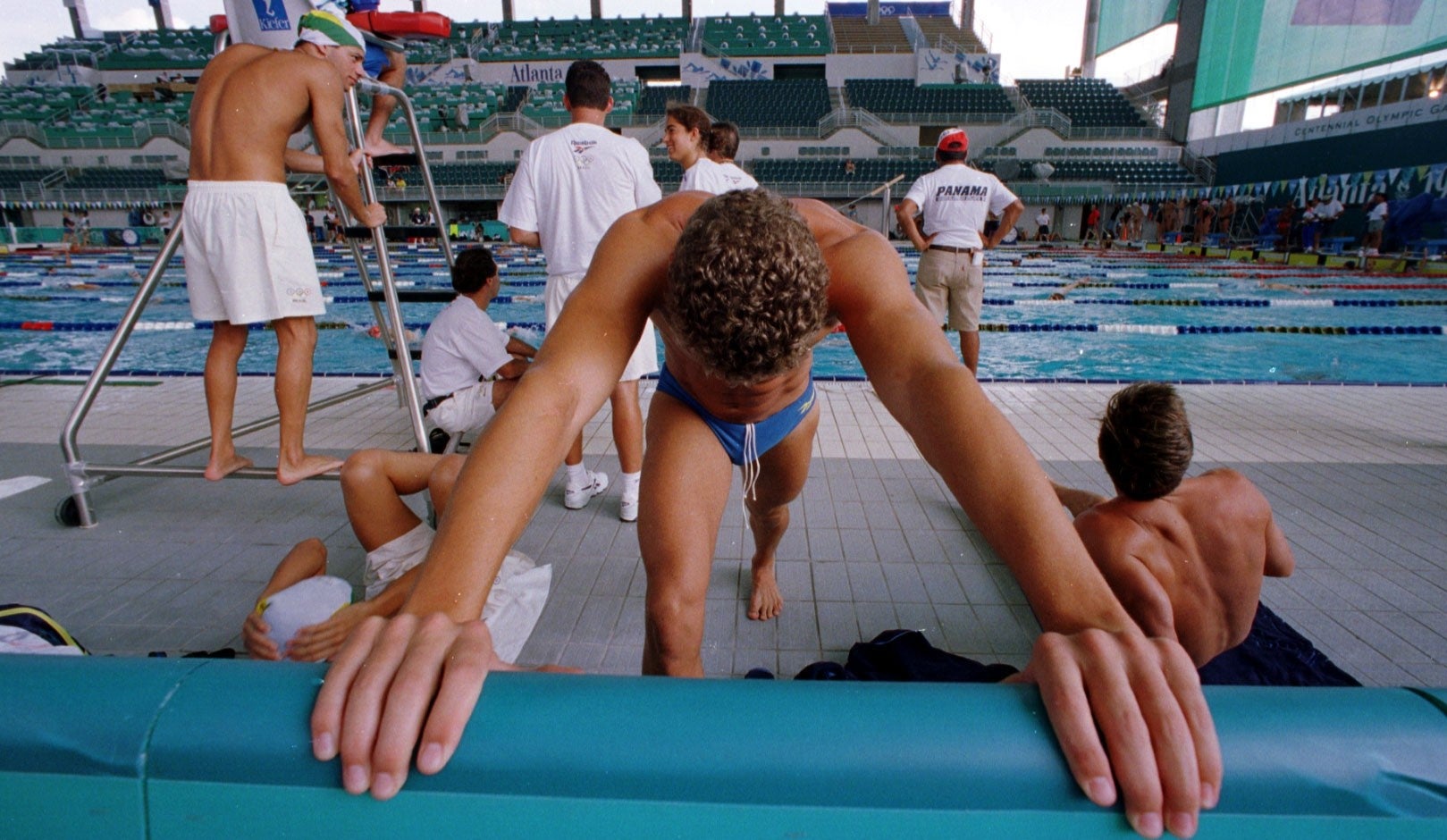This website uses cookies so that we can provide you with the best user experience possible. Cookie information is stored in your browser and performs functions such as recognising you when you return to our website and helping our team to understand which sections of the website you find most interesting and useful.
Support truly
independent journalism
Our mission is to deliver unbiased, fact-based reporting that holds power to account and exposes the truth.
Whether $5 or $50, every contribution counts.
Support us to deliver journalism without an agenda.

Louise Thomas
Editor
This weekend, the Olympic Games sprint into action. For 17 days, Paris is host to the world’s best athletes, presenting a perfect opportunity to dive into The Independent’s archive and indulge in some Olympic nostalgia.
At games gone by, our former chief sports photographer, David Ashdown, captured iconic images that narrate powerful stories – from record-breaking sprints to vertigo-inducing dives.
In photographs chronicling Games from the 1980s into the 90s, readers might notice the shift from film to digital. The later imagery is more vibrant and saturated with colour; particularly Ashdown’s pictures at the Atlanta Games. But what also stands out, from the Seoul Olympics of 1988 through to Sydney in 2000, is the immediacy and motion captured in these shots.

Seoul 1988
The first Olympics to take place during The Independent’s lifetime was Seoul in 1988, the second Summer Games to be held in Asia. It was an eventful competition marked by the Ben Johnson doping scandal, which saw the Canadian sprinter stripped of his 100m gold, Florence Griffith Joyner’s world records in the 100m and 200m, which still stand today, and diver Greg Louganis’s gold medal win after an accident on the board left him with stitches to the head.

Among the Brits competing that year was June Croft, photographed by David Ashdown in training. Croft was a distinguished swimmer for over a decade who claimed two Olympic medals during her career. Elsewhere, Ashdown captured a weightlifter letting out a roar during his lift, and Daley Thompson sprinting ahead of the competition in the men’s decathlon.

Barcelona 1992
Four years later, the Olympics travelled to Barcelona. It was a summer of firsts: the first Games since the fall of the Berlin Wall and the end of the Cold War as the organisers welcomed a newly unified German team and the newly independent Baltic states. Germany performed particularly well at the 1992 Games, finishing third in the overall medal count and achieving their first gold medal in women’s hockey.

Captured by Ashdown, one of the headline wins for Great Britain that year was a victory by British sprinter Linford Christie in the 100m sprint. At the age of 32, Christie was no stranger to the Games but was yet to win a gold and was facing strong competition.

Yet, in an astonishing performance, Christie triumphed over his younger competitors in 9.96 seconds. Christie’s win was a landmark achievement, and inspired a new generation of British athletes.
Atlanta 1996
Photographs of the Atlanta Games are saturated with colour as Ashdown’s pictures take a vibrant turn away from the greyscale captures of previous Olympics.

Among my personal favorites are the behind-the-scenes snapshots that show athletes in training or enjoying brief moments of downtime. Here, we see divers having a stretch by the pool and a water polo player getting some shut-eye.

Atlanta marked the 100th anniversary of the modern Games, though celebrations were overshadowed by the tragic bombing of Centennial Olympic Park, which killed two and injured more than 100.
Despite this, the Games continued and featured many memorable moments, including Michael Johnson’s double gold in the 200m and 400m. Among the standout images captured by Ashdown that year is a striking shot of British high jumper Steve Smith, mouth agape, during his silver medal jump.

Sydney 2000
As Sydney closed out the Nineties, there was a bigger shift toward digital photography, serving to capture moments with greater immediacy and efficiency than traditional film.

Among the athletes photographed by Ashdown that year were rowers Matthew Pinsent, Steve Redgrave, James Cracknell and Tim Foster. The crew achieved a storming victory in the men’s coxless four event, earning Redgrave his fifth consecutive gold medal.

Whether it’s Seoul 1988 or Sydney 2000, vibrant and dynamic images like these capture the essence of Olympic competition: athleticism, team spirit and human triumph.



 Africana55 Radio
Africana55 Radio 
